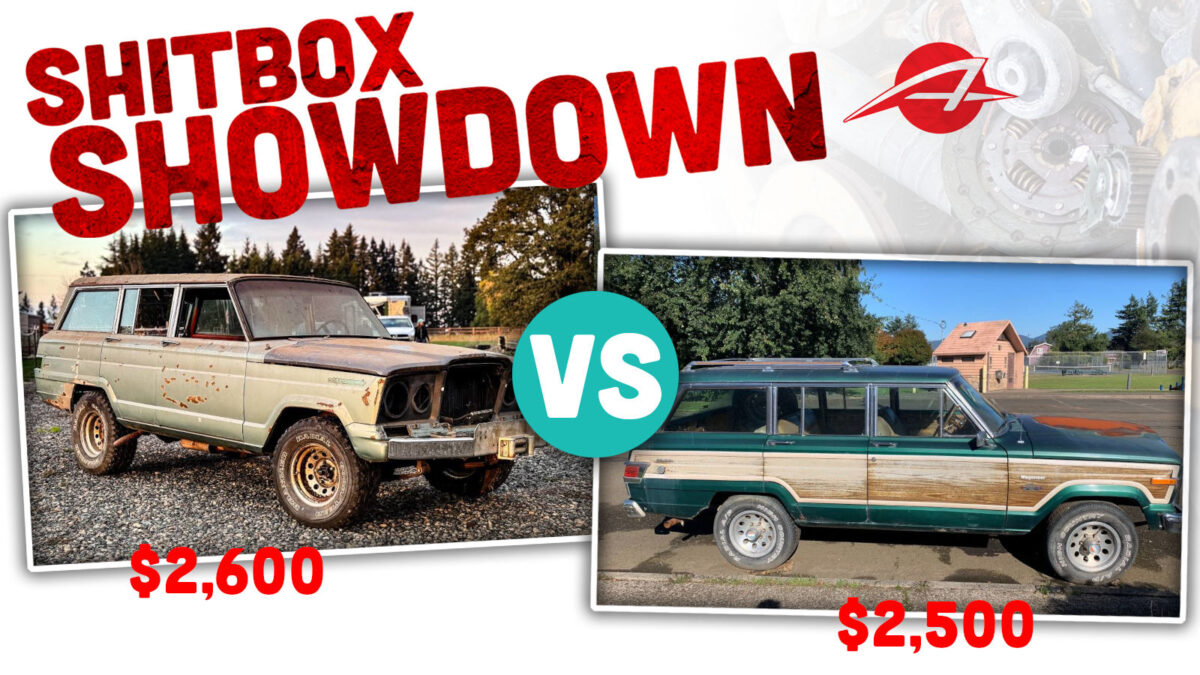
Welcome to another exciting edition of Car news! Today, we’re diving into the showdown between two iconic Jeeps – the 1970 Wagoneer and the 1979 Wagoneer. These vehicles represent different eras and offer unique features that cater to car enthusiasts. So, let’s explore them, compare, and decide which one reigns supreme.
The Evolution of Jeep Wagoneer
After World War II, the civilian Jeeps closely resembled their military counterparts – tough, rugged, and utilitarian. However, as competition emerged from brands like International, a more refined and comfortable Jeep was needed. That’s when the Wagoneer entered the scene. This four-door wagon had a remarkable lifespan, spanning from 1963 to 1991, with three different owners of the Jeep brand. Today, we’ll be examining two versions that showcase the Kaiser era and the AMC years.
1970 Jeep Wagoneer

Engine/Drivetrain: 350 cubic inch overhead valve V8, three-speed automatic, part-time 4WD
Location: Eagle Creek, OR
Odometer Reading: 100,000 miles
Runs/Drives: Runs, but not roadworthy
The 1970 Wagoneer boasts an interesting history. Earlier versions of the Wagoneer featured independent front suspension and an overhead-cam inline six—advanced technology for 1963. However, by the time our 1970 model rolled off the production line, cost considerations led to a simpler design. It came equipped with a solid axle on leaf springs, similar to the Jeep CJ, and a Buick-built 350 cubic inch V8 engine. Surprisingly, the Buick engine was a factory option rather than a makeshift replacement, showcasing the versatility of these vehicles.
While this particular Wagoneer runs well and shifts smoothly, it is not roadworthy. It requires some work to become fully functional, such as installing a new alternator belt and addressing the empty cooling system. Also, the absence of a driver’s seat and various missing parts, including the grille, headlights, taillights, and tailgate, are notable. The interior reveals some rust damage, particularly the floors.
Despite these shortcomings, the 1970 Wagoneer possesses potential and can be saved. Its running condition and ability to move under its own power set a solid foundation for restoration.
1979 Jeep Wagoneer

Engine/Drivetrain: 360 cubic inch overhead valve V8, three-speed automatic, full-time 4WD
Location: Tillamook, OR
Odometer Reading: 144,000 miles
Runs/Drives: Nope, had an engine fire
Now, let’s shift our attention to the 1979 Wagoneer, a complete vehicle with its fair share of challenges. This version showcases the classic fake woodgrain sides, a saddle-tan interior, and intact exterior trim. However, it suffered from an engine fire, proving the dislike many enthusiasts have for the AMC 360 V8 engine. The seller has started repairs, including installing a new carburetor and acquiring a new wiring harness, but lack of time prevents them from completing the restoration.
Apart from the visible engine damage, this Wagoneer exhibits significant rust damage, particularly to the rocker panels and fenderwells. The hood also bears the scars of the fire. While the interior remains imperfect, it is intact, albeit with a missing window crank and tears in the driver’s seat.
Despite these setbacks, the 1979 Wagoneer presents an opportunity for restoration. By continuing the work the seller began, it can be brought back to life. However, it should be noted that the rust issues are extensive and likely extend to the floors.
The Ultimate Decision

Considering the state of both Jeeps, making a final decision is challenging. However, one possibility is to purchase both vehicles and transfer parts from the 1979 Wagoneer, which has the complete set of components, to the 1970 Wagoneer with the running Buick engine. This approach would create a well-functioning Wagoneer without the need for an exorbitant budget, as clean Wagoneers are commanding high prices in today’s market. The resulting vehicle may not be a showpiece but would offer a reliable and decent-looking truck.
Alternatively, one could choose to focus on off-road capabilities with the 1970 Wagoneer or invest time and effort into restoring the 1979 Wagoneer for potential resale at a premium price. The decision ultimately lies in the hands of the buyer.
(Image credits: Craigslist sellers)
FAQs
1. How long did the Wagoneer model last?
The Wagoneer model was produced from 1963 to 1991, experiencing three different owners of the Jeep brand.
2. What is the engine configuration of the 1979 Wagoneer?
The 1979 Wagoneer featured a 360 cubic inch overhead valve V8 engine.
3. Can the 1970 Wagoneer be used for off-road adventures?
Yes, the 1970 Wagoneer has the potential to be transformed into an off-road beast with the right modifications.
4. Are complete Wagoneers available at affordable prices?
Complete Wagoneers in good condition are commanding high prices in the current market, making these two examples worth considering for their restoration potential.
Conclusion
The battle between the 1970 and 1979 Wagoneers showcases the evolution and challenges of these iconic Jeeps. Both vehicles offer unique opportunities for restoration and customization. Whether you choose to create a reliable truck or an off-road beast, the Wagoneer legacy lives on, captivating car enthusiasts with its timeless design and rugged spirit. So, which one will you choose? The decision is yours.